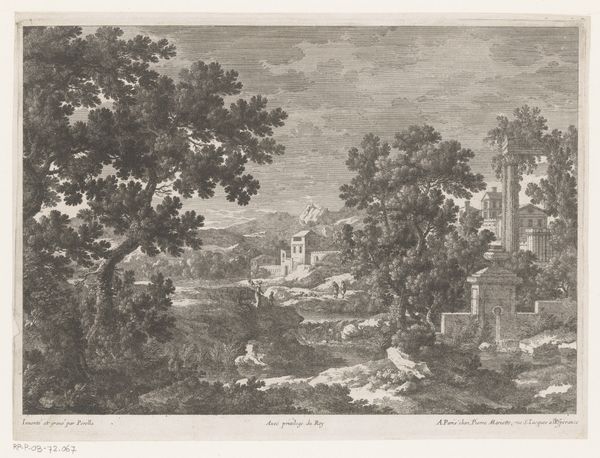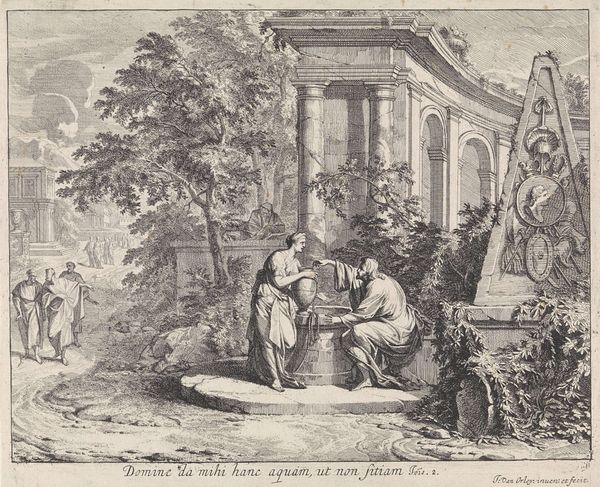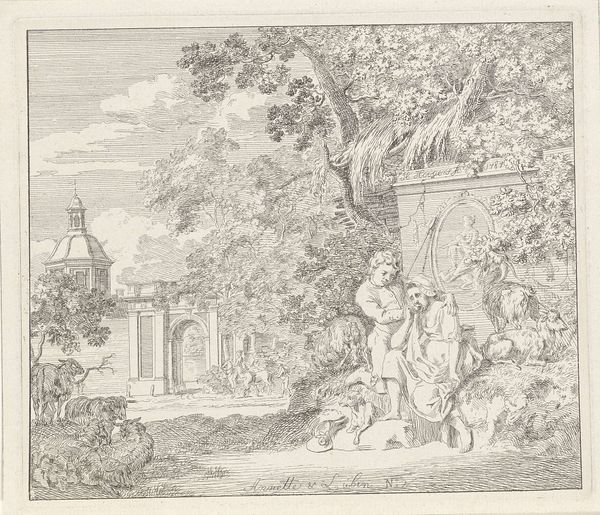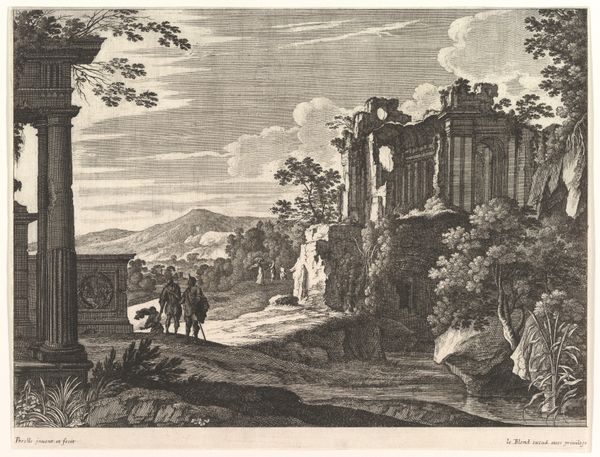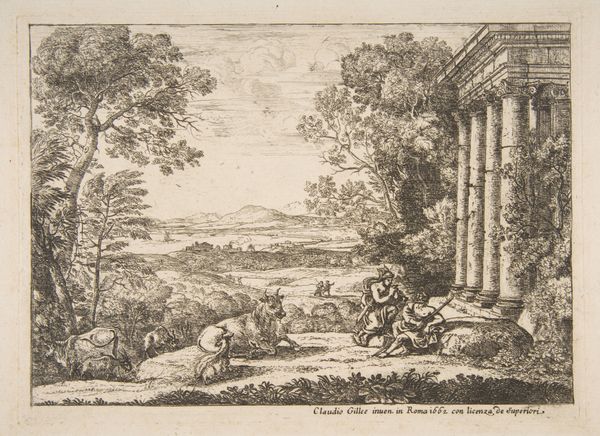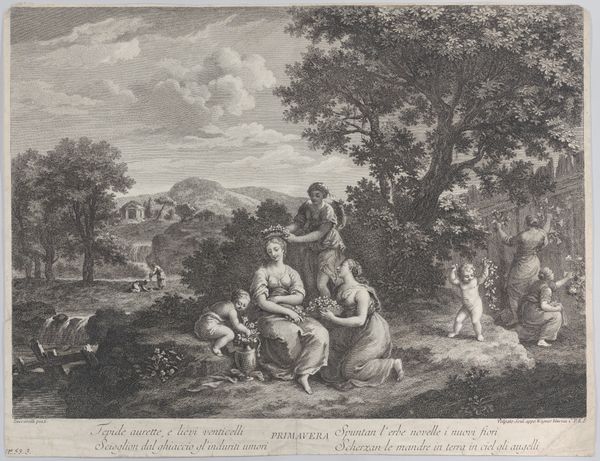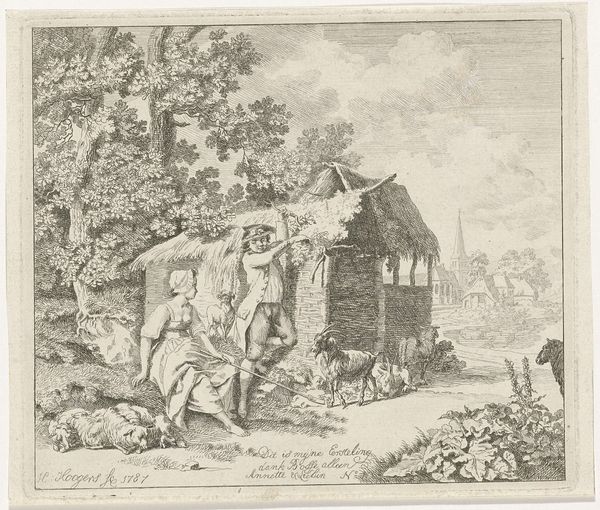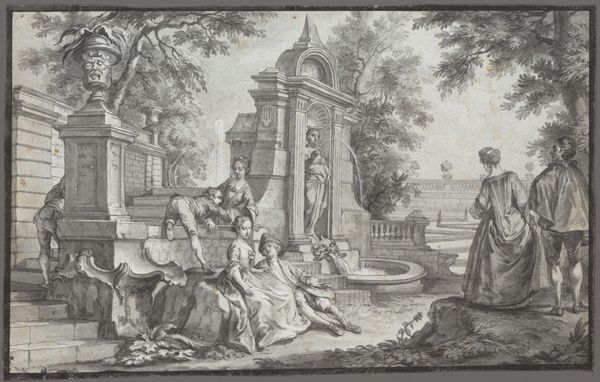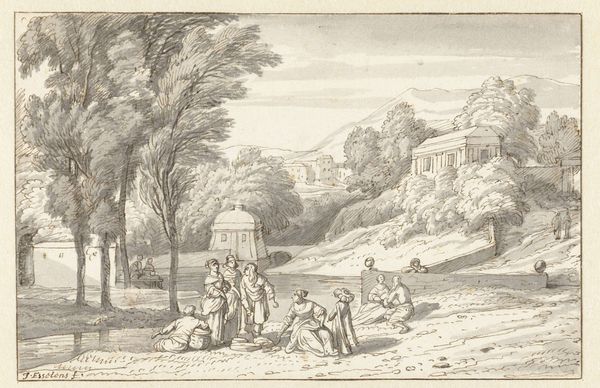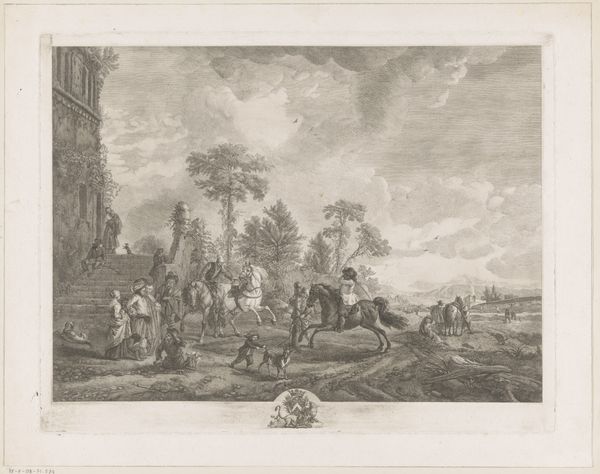
print, engraving
#
narrative-art
#
baroque
# print
#
old engraving style
#
landscape
#
figuration
#
history-painting
#
engraving
#
christ
Dimensions: height 176 mm, width 218 mm
Copyright: Rijks Museum: Open Domain
Curator: Welcome. Before us is "Christus en de Samaritaanse vrouw," an engraving by Adam Perelle, likely created between 1673 and 1695. It resides here at the Rijksmuseum. Editor: It’s incredibly detailed for an engraving. There’s a certain stillness, almost melancholy, emanating from the figures and this vast, intricate landscape. Curator: Yes, Perelle was known for his landscapes. Notice how the composition leads our eye from the detailed foreground—Christ and the woman—through the carefully rendered architecture, and finally, to the receding landscape in the background. The play of light and shadow, particularly in the foliage, is exceptional. Editor: That focus on landscape also softens the impact of what should be the central figures. For the woman drawing water for a stranger, who also happens to be asking for a drink and defying cultural norms, the setting almost equalizes them, flattening the power dynamics between Christ and this marginalized woman, drawing water, historically a woman's task, away from public male spaces. Curator: Perhaps. However, consider the engraving's function within Baroque art. The meticulously crafted details, the balanced composition, serve to elevate the scene, creating a sense of idealized beauty. Even the textures—the stone of the well, the folds in the clothing—are rendered with precise visual fidelity. Editor: True, but isn't that pursuit of “idealized beauty” itself a constructed narrative? In presenting a scene with such deliberate artistic choices, the engraver participates in shaping the viewers interpretation. Think about who this piece was made *for* and what they might expect or desire to see reflected here. The halo further confirms a visual rhetoric. Curator: I find that a somewhat speculative reading. One can appreciate the artistry, the sheer skill involved in creating such a detailed engraving, without necessarily engaging in sociopolitical deconstruction. The composition is beautiful without regard to any context. Editor: Beauty, however, is always a product of specific context! Examining who is framed—and how—invites inquiry into those artistic choices that frame a vision not necessarily shared by all who see. The scene has social significance. Curator: An interesting point, I see something different each time I view it. Editor: As do I, that is why this piece warrants further attention.
Comments
No comments
Be the first to comment and join the conversation on the ultimate creative platform.


